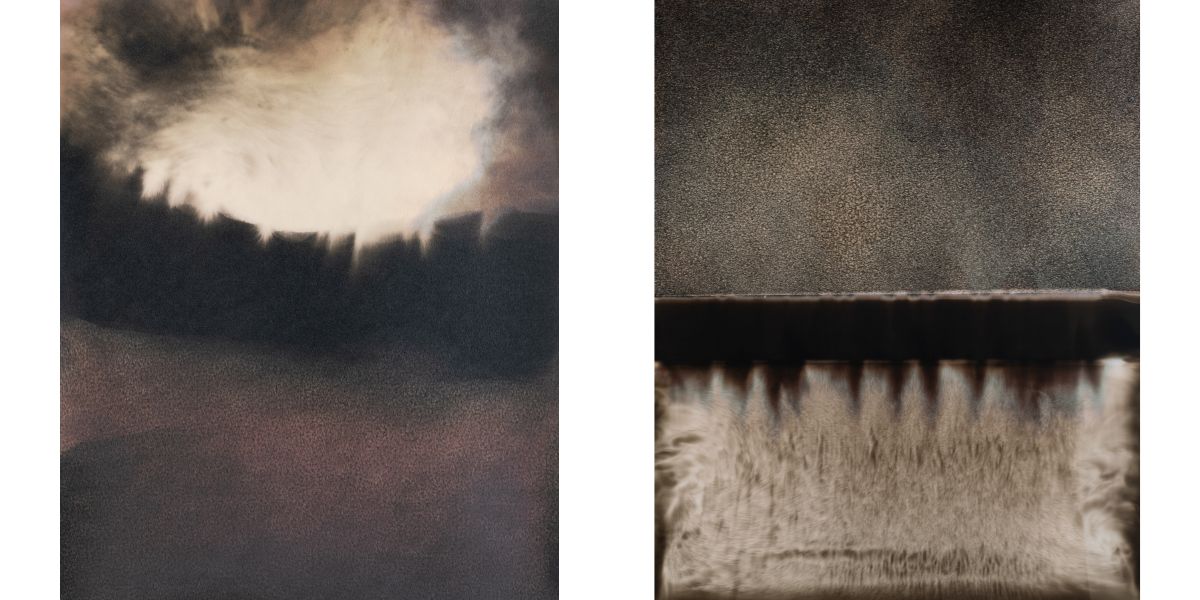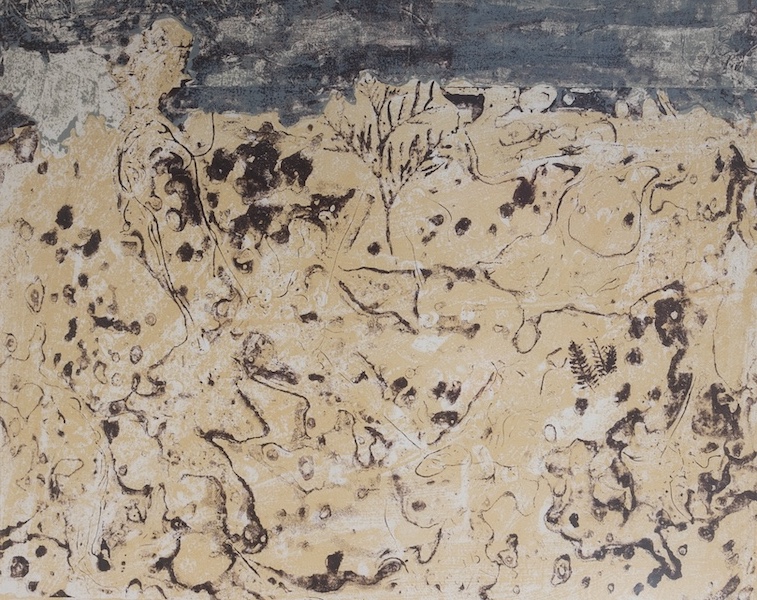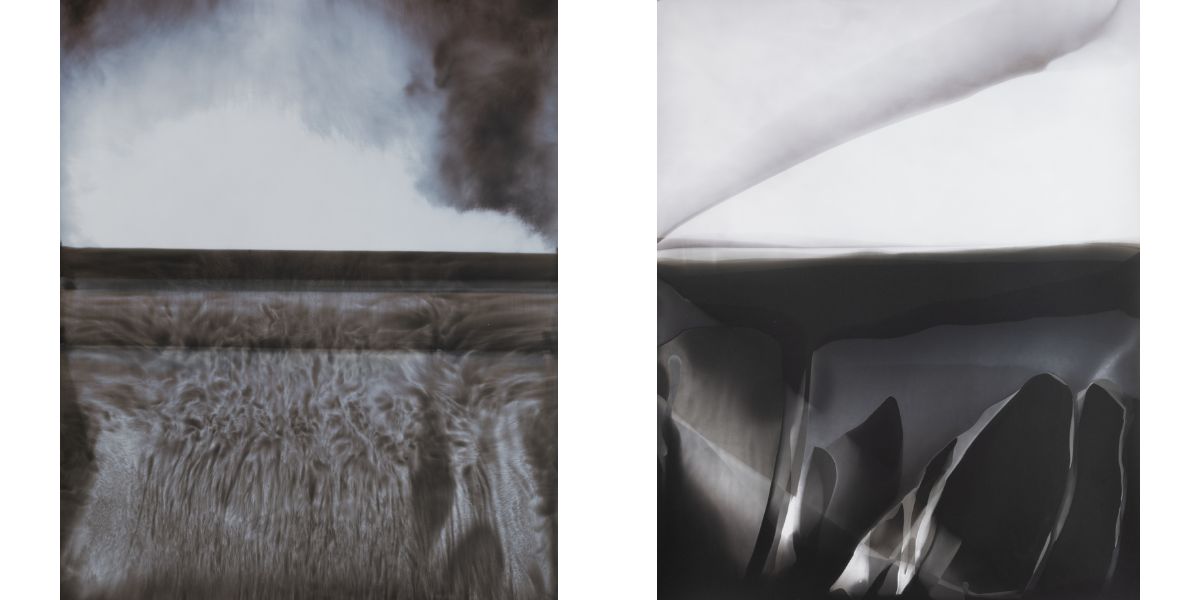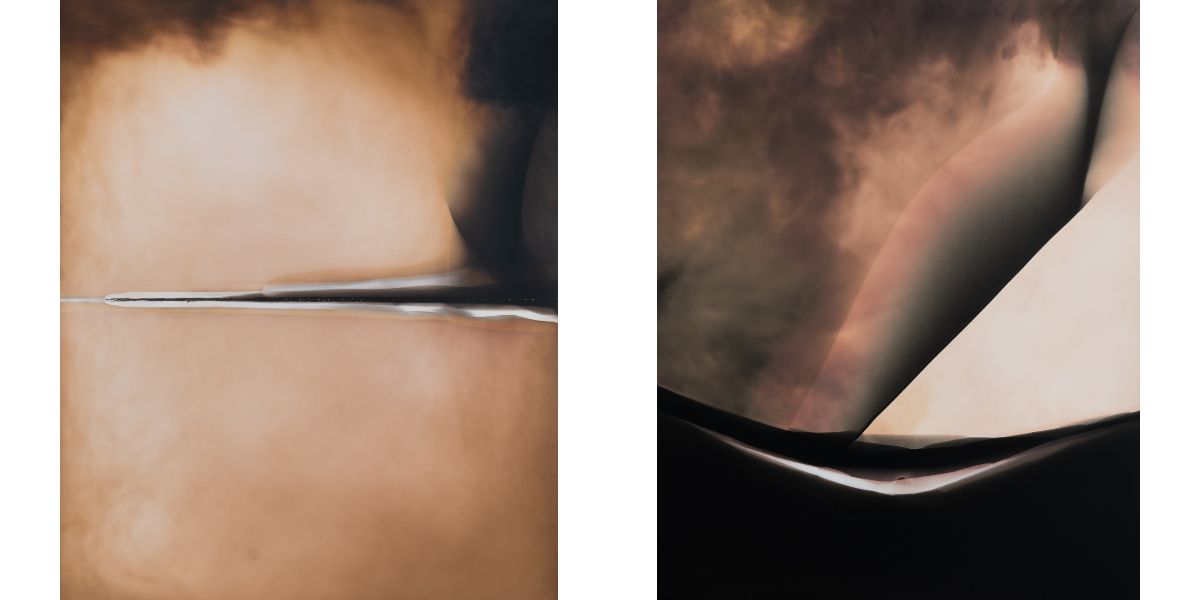Chuck Kelton x Jean Dubuffet : Something to fall into
12 February - 26 April
The exhibition will present original lithographies by Jean Dubuffet from the 1940s and 50s, in dialogue with contemporary experimental photographs by Chuck Kelton.
Made in very different historical and cultural contexts, the vintage lithographies by Jean Dubuffet - painter, sculptor and founder of the art brut movement - resonate in many ways with the contemporary experimental photographic works by Chuck Kelton, master darkroom printer. Both bodies of work consider questions of process, matter and surface; the artistic gesture vs. chance. Upturning the conventional practice of their medium, each artist evokes nature through abstraction. There is also a shared quest for a humble art form, a modest yet universal beauty. The exhibition title is a handwritten note found in Chuck Kelton’s preparatory notebooks, that describes the emotion he seeks to create with his works. Interestingly, just as Dubuffet was a passionate collector of art brut, Chuck Kelton is also an avid collector and an American museum recently installed his personal collection of African masks, acquired over several decades, alongside his own experimental chemigrams.
Jean Dubuffet and printmaking
Painter and sculptor, founder of the art brut movement, Jean Dubuffet's lithography is a lesser-known aspect of his opus. Yet his printmaking was prolific: Dubuffet began making prints in the mid-1940s, achieving a total output of some 1500 works, many for illustrated books (such as Matière et Mémoire with French writer Francis Ponge,1944-45). His experimental practice is considered to have “revolutionized lithography”: scratching the lithographic stones with sandpaper, he rubbed them with rags and other unconventional materials to achieve the varied effects he desired. Dubuffet's unorthodox approach reached its zenith with the Phenomena series of 1957–62, comprising 362 compositions sorted into twenty-four albums, creating an alternative universe that seems to capture the ever-changing forces of nature. Turning drawing into an improvisational act, he sought the effects of chance and accident by pressing dirt, fruit peelings and leaves onto the printing surfaces, that he rubbed with burning rags, and onto which he spilled chemicals.
For Dubuffet, printmaking provided “the chance to get away from it all, to be free from influences and ruts and in a position of complete freedom and independence.” In this form of expression, Dubuffet appreciated “the modesty, the unrecognized beauty...[the possibility of] creating on the perfect grained surface, accidents, material effects that lithography has not yet seen”, opening up a whole register of unexpected nuances compared to the usual, uniform black of lithographic ink. The prints allowed Dubuffet to obtain astonishing images: with the Phénomènes series, he considered himself to be a simple 'revealer' of a world to which our daily gaze blinds us. On the stone or the zinc surface, the artist magnified discarded elements - plant and dust fragments - transforming them until we lose scale and identity, to the point of discovering a dazzling cosmogony.” - Daniel Abadie, art historian (1945-2023).
The Paris exhibition will propose signed original lithographis by Jean Dubuffet from his landmark series Matière et Mémoire and Phenomènes, from the collection of baudoin lebon.
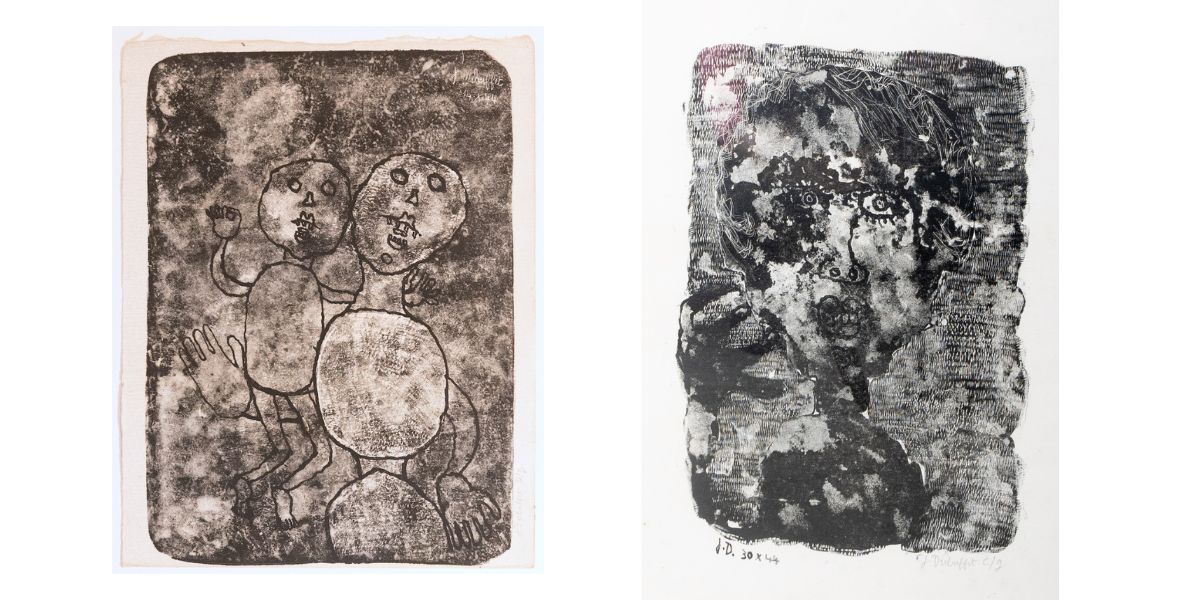
Chuck Kelton and cameraless photography
Chuck Kelton makes unique, camera-less photographs, working in full daylight outside of the darkroom and spending weeks, sometimes months, sketching and preparing each work. A master printer, Kelton is also a passionate collector of photographs, practical manuals and tools from the history of photography. He explores 19th century techniques and chemistry such as gold chloride and selenium, that he combines with bleach and developer to coax a lush palette of colours from light sensitive, traditional silver gelatin papers. Describing his approach as "calligraphy with chemistry", Chuck Kelton combines chemigram and photogram techniques: the image in a photogram is the result of exposing photographic paper to light — writing with light — whereas the image in a chemigram is the outcome of exposing photographic paper to developer and fixer — writing with chemistry. Kelton often folds the paper in two - a transgressive act in photography - creating a visual break that is understood by the viewer as a horizon line creating depth of field in the artist's misty palette.
Chuck Kelton’s works are evocative of other media such as watercolor, oil painting, drawing - and, on this occasion, lithographs. Kelton invites us into a romantic world that seems nonetheless on the edge of calamity. His imagery is delicate and composed but also the product of improvisation and accident, resulting in highly atmospheric and timeless images:
“I’m looking for spectacular images, something I haven’t seen before, something that references
photography and a hundred other things both historical and visual. A moment where chaos seems
to undermine harmony. A moment where you feel threatened and peaceful, a visual dialogue between
oppositions; irrational and rational, belief to disbelief, something at once known and unknown.”
(quoted in interview published in LensCulture, 2016)
The exhibition will present unique photograms and chemigrams by Chuck Kelton from 2015-2024.

